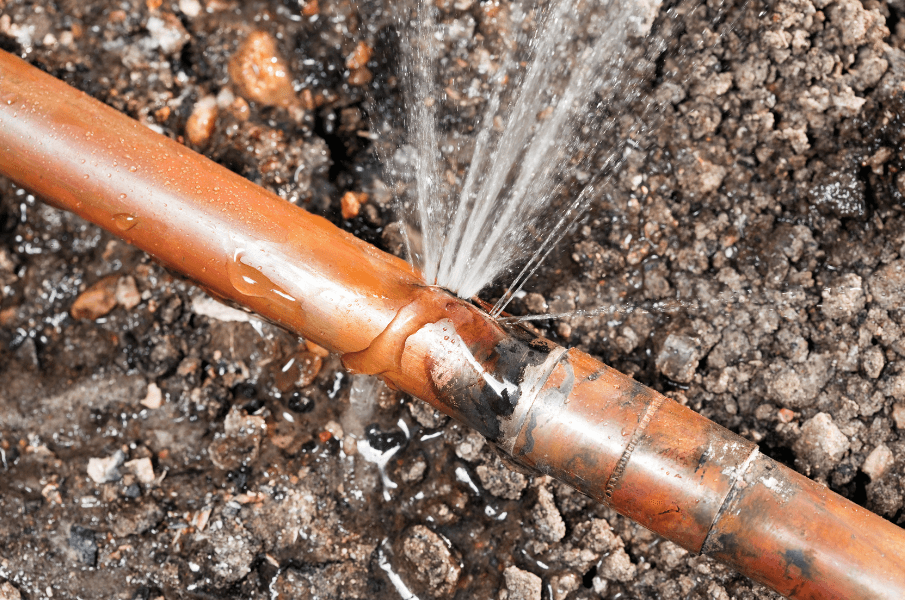Water main problems such as pipe bursts, severe leaks, contamination issues, blockages, corrosion damage, and pressure irregularities need immediate attention. Pipe bursts can cause significant water loss and damage to nearby infrastructure. Severe leaks decrease water pressure and waste a lot of water.
Contamination issues pose serious health risks. Blockages disrupt water flow and lower water pressure. Corrosion damage weakens pipes, leading to leaks and bursts. Pressure irregularities can cause water hammer and inadequate water supply.
Each issue requires specific emergency repairs to restore normal water flow and ensure public safety. These repairs often involve isolating the affected area, replacing damaged sections, clearing blockages, and testing the system to confirm the repairs are successful.
Water mains are essential for delivering clean water to homes and businesses, ensuring a reliable supply for daily activities and public health. However, problems with water mains can disrupt this important service.
This guide will cover common water main problems that need emergency repair. We’ll explain each issue, how it affects your water supply, and the repair methods used. Find out how prompt and effective repairs can restore normal water flow and ensure public safety.

Water Main Problems That Require Emergency Repair
Water mains are important for delivering clean water to homes and businesses. However, when problems arise, they can cause significant disruptions. Issues in water mains require immediate attention to ensure the safety of the water supply.
The following are some of the most common water main problems that need emergency repair and how they are addressed.
Pipe Bursts
The Problem
Pipe bursts are one of the most urgent water main problems that need immediate emergency repair. They typically occur when the pipe material fails due to age, pressure changes, or freezing conditions.
When a water main bursts, it can cause significant water loss, damage to nearby infrastructure, flooding, and weakening of streets and foundations. The sudden release of water can erode the ground, compromising the stability of roads and buildings.
Types of Emergency Repairs
Emergency repairs for pipe bursts may involve excavating the affected area to reach the burst pipe, replacing the broken section, and restoring the site. This process includes filling the excavation, compacting the soil, and returning the area to its original condition. These steps are essential to effectively manage a pipe burst and quickly restore normal water service.
Severe Leaks
The Problem
Severe leaks in water mains waste large amounts of water and reduce water pressure. These leaks are usually caused by cracks or holes in the piping that can worsen over time if not fixed.
Ignoring severe leaks can lead to higher utility costs, potential water contamination, and more stress on other parts of the water system.
Types of Emergency Repairs
Emergency repair of severe leaks typically involves locating the exact source of the leak using specialized detection equipment. It also include isolating the damaged section, and repairing or replacing the affected pipes.
Contamination Issues
The Problem
Contamination issues in water mains pose serious health risks and need immediate attention. These problems can happen when pipe breaches allow soil, microbes, or chemicals to enter the water supply.
Common signs of contamination include unusual taste, odor, or discoloration of the water.
Types of Emergency Repairs
Emergency repairs for contamination usually involve flushing the system and repairing compromised sections of the pipe. Conducting thorough water quality tests to ensure the water meets safety standards is also needed.
Emergency actions also include notifying the public and providing guidance on safety measures, such as boiling water before use.
Blockages
The Problem
Blockages in water mains can significantly disrupt water flow, leading to low water pressure and irregular water supply. These blockages are often caused by sediment buildup, debris, or roots from nearby vegetation.
The impact on residents can be immediate and severe, especially if water delivery is compromised.
Types of Emergency Repairs
To address this issue, emergency repair teams typically use specialized tools to clear the blockage and restore proper water flow. This might involve flushing the system with high-pressure water or mechanically removing the obstruction.
Once the blockage is cleared, normal water flow is restored, and systems are monitored to ensure no further issues arise.
Corrosion Damage
The Problem
Corrosion damage in water mains can weaken pipes, or even complete system failures. This damage generally occurs over time as the pipe material reacts with water or soil, deteriorating the pipe walls.
If not addressed promptly, corroded pipes can compromise the water main’s structural integrity.
Types of Emergency Repairs
Emergency repairs for corrosion damage typically involve replacing the corroded sections of the pipe with new, corrosion-resistant materials. The affected area is excavated, the damaged pipe is removed, and a new section is installed. This prevents future leaks and ensures the long-term reliability of the water main.
Pressure Irregularities
The Problem
Pressure irregularities in water mains can cause significant problems, such as water hammer, burst pipes, or inadequate water supply. These irregularities often result from blockages, pump failures, or improperly calibrated pressure-regulating valves. Fluctuations in pressure can lead to inconsistent water delivery.
Types of Emergency Repairs
To address these issues, emergency repair teams assess the system, identify the cause of the pressure irregularity, and make necessary adjustments or repairs. This may involve replacing or adjusting pressure valves, and repairing damaged sections causing disruptions.

